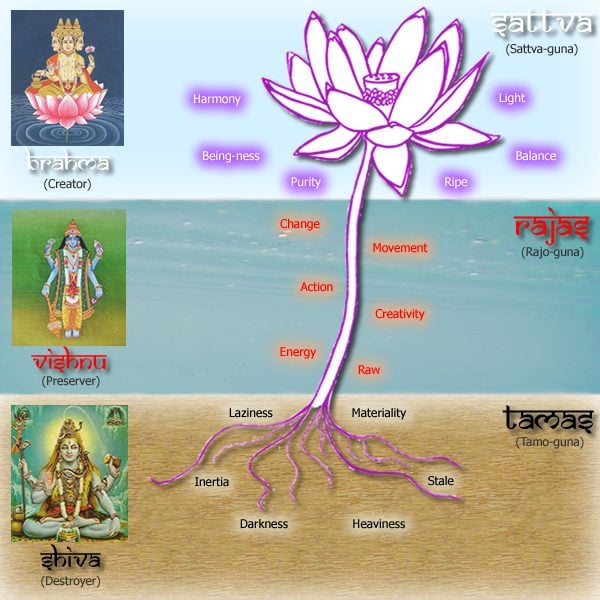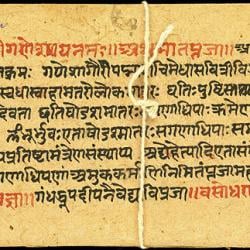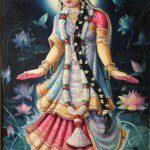(Note: I am on my honeymoon this week, so if your comment doesn’t show up right away, give me a day or two!)
I promised you a post about the gunas!
So the word “guna” (Goooona) is usually translated as “quality” as in the types of qualities that things are made of.
It is said that everything in creation has some combination of the three qualities in differing amounts.
Rajas
This one is energy, passion, anger, movement
Tamas
This one is inertia, dullness, laziness
Sattva
This one is peace, serenity, calm
One of the goals in human life is to try to increase our sattva and decrease the other two.
Some people believe that the food we eat has an effect and that we should eat sattvic food and avoid rajasic and tamasic foods (this is the reason why some groups of Hindus avoid spicy food, onions, and garlic). This is also why leftovers are not a part of a traditional diet. That’s tricky because on the one hand, leftover food is tamasic but on the other hand using leftovers is efficient and saves money.
I had a professor in college (in a class on The Mahabharata, can you believe how lucky I was?!) who had an unusual perspective on it. He believes that there are really only two guna: rajas and tamas and that sattva is created by having the right balance of the other two.
I’ve said more than once that I feel like I have a higher amount of tamas than most people. I tend to see more rajas in the average person. More passion and dedication than I tend to be able to muster. (Now, part of that could be dealing with intermitent depression.) My parents don’t like when I say this, but I don’t mean it as an excuse. I mean it as I know what I need to work on! Being aware of my tendency towards tamas, I can correct for it.
One great way of understanding the world through the gunas is in the example of love. When I learned about this, it really stuck with me. We tend to think of love as a single emotion, but it can manifest in very different ways, actually. Love as an emotion can also have a guna quality.
Pure, selfless, true love is sattvic love. Giving to that person only increases your own joy and peace. Even if they are with someone else, you want above all for them to be truely happy and you don’t feel like you have to posess them.
Rajasic love is possessive and jealous. You must have the other person and you feel easily threatened. This is the crazy mindset of “If I can’t have you, no one can, so I’ll kill you.”
Tamasic love is emotionally needy. It is requiring the other person to fix you.
There are even guna qualities to different times of day. This is why it is encouraged to get up by dawn and meditate or pray at the first light of day. That is a very sattvic time.
This website points out that gurus have guna qualities too:
Unfortunately guru as everything in material world can be in all three gunas. True, sattvic guru represents a chain of teacher-diciple relations and follows ancient scriptures not only in words but also in his every day life. He doesn’t criticize other religions nor he promises an easy and rapid way. Rajasic teachers are prone to criticism and separatism, often invent their own ways or “improve” already existing old practices. Tamasic leaders are violent and extreme.
But, as Krishna says in The Gita, in enlightenment, a person is not under the sway of any of the gunas:
“They are unmoved by the harmony of sattva, the activity of rajas, or the delusion of tamas. They feel no aversion when these forces are active, nor do they crave for them when these forces subside.”
Check out this gorgeous guna diagram from http://svasti.wordpress.com/















